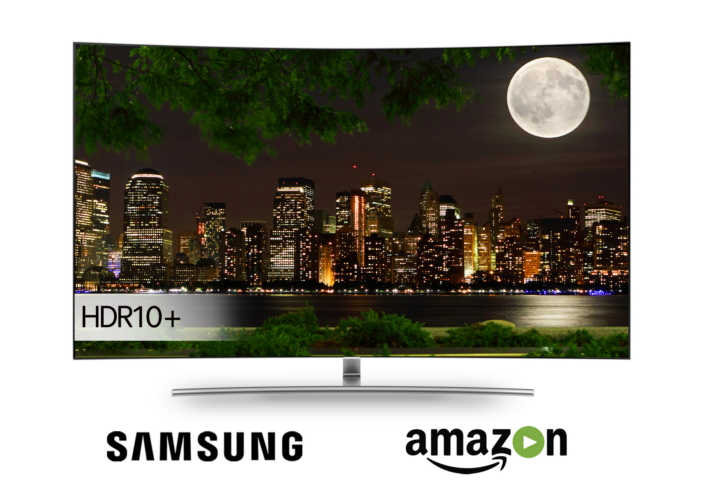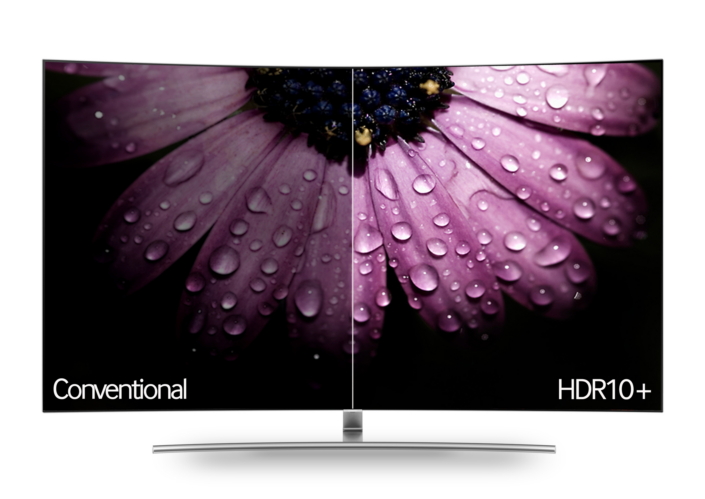Samsung, Amazon To Support Improved HDR10+ Standard
Samsung and Amazon Video announced an updated version of the open HDR10 standard, called HDR10+. The new version of the standard leverages dynamic metadata to produce enhanced contrast and colors.
HDR10
The HDR10 standard describes a specification with better contrast and brightness, as well as a wider gamut of color, for TVs. It’s an open standard developed by the Consumer Technology Association, a standards and trade association for the consumer electronics industry in the United States.
HDR10 uses the newer Rec.2020 color space standard, which is larger than Adobe RGB and the DCI P3 digital cinema color spaces. As the HDR10 name implies, it also uses a bit depth of 10 bits, compared to the standard 8-bit color.
The HDR10 standard is supported by Samsung, LG, Sony, Sharp, Vizio, and Microsoft, as well as by Amazon Video and Netflix.
HDR10+
The HDR10+ update brings Dynamic Tone Mapping to the standard. The current HDR10 standard utilizes static metadata that remains fixed for the period of the video playback. This means that if a movie’s color scheme is bright overall, but some scenes are shot in dimmer light, they would appear darker than envisioned or intended.
The new HDR10+ standard adjusts the high-dynamic range of a movie scene by scene or even frame by frame, which should produce significantly better and more enjoyable results.
Samsung said that all of its 2017 UHD and QLED (Quantum Dot LED) TVs will be HDR10+ compatible. Its 2016 UHD TVs will also receive support for the new standard through a firmware update.
Get Tom's Hardware's best news and in-depth reviews, straight to your inbox.
Partners
Amazon Video has been one of Samsung’s first partners in developing the HDR10 standard, and now the video streaming service is the first to adopt HDR+ as well.
“Together with Samsung, we are excited to offer customers an enhanced viewing experience on a broad range of devices,” said Greg Hart, Vice President of Amazon Video, worldwide. “At Amazon, we are constantly innovating on behalf of customers and are thrilled to be the first streaming service provider to work with Samsung to make HDR10+ available on Prime Video globally later this year,” he added.
Samsung also previously partnered with Colorfront, a company that develops software for the motion picture industry, to improve HDR+ workflows for creative post-production mastering. The company also collaborated with MulticoreWare to integrate HDR10+ support in the x265 video codec, which is available under an open source license and used by many popular commercial encoding providers.
Lucian Armasu is a Contributing Writer for Tom's Hardware US. He covers software news and the issues surrounding privacy and security.
-
jaber2 I like how they show the difference on my monitor, my monitor can see and show both so it must be as good as their new TVReply -
How about bringing this tech to monitors also, not just television. I have seen 10-bit monitors, but have yet to see HDR monitors for sale anywhere.Reply
-
Daekar3 I feel sorry for anybody that keeps up with TV and monitor technology, they bring out so much new stuff all the time. I've got a 32" 720p TV that still looks great and two ancient flatscreen monitors that run on DVI. They don't look any different from the new ones, and 1920x1200 doesn't look any worse now than it did years ago.Reply
Honestly, I feel like they keep changing the standard so much it would be a bad idea to buy a TV in the next 2 years before things are nailed down. -
falchard LG is bringing HDR10 to it's UD99 which should be shipping soon. Only problem is the available bandwidth. You won't be able to run HDR and 4k60hz with displayPort 1.3. You will need either HDMI 2.0 or displayPort 1.4.Reply -
derekullo This page has taught me that conventional monitors are bought by people who don't know how brightness nor contrast works on their TV.Reply
I mean seriously it looks like some one put a door screen in front of the left side of the monitor -
alextheblue Reply
There's a middle ground between keeping up with the latest, and using outdated technology. $300-400 would get you a 4K TV *FAR* superior to your ancient 720p TV. That is hardly "keeping up" with TVs, since there are higher-end TVs with HDR10 (soon 10+), 120+ refresh rates, better panel technologies, upgraded backlighting, etc. But you don't really have to worry about newer standards if you're buying a sub-$400 TV. For a monitor a decent modern IPS panel would blow away your older displays. There's a lot of factors but for even a fairly basic Vizio 4K set would be worlds better than that old 720p panel. Combine that with an XB1 S or other true UHD BD player and if you don't see the difference... the problem is with your eyes.19589867 said:I feel sorry for anybody that keeps up with TV and monitor technology, they bring out so much new stuff all the time. I've got a 32" 720p TV that still looks great and two ancient flatscreen monitors that run on DVI. They don't look any different from the new ones, and 1920x1200 doesn't look any worse now than it did years ago.
Honestly, I feel like they keep changing the standard so much it would be a bad idea to buy a TV in the next 2 years before things are nailed down.
I'm not kidding or being sarcastic, maybe you have cataracts or other vision problems. When people say there's a difference between 720p, 1080p, and 4K... they're not making it up. Again, there's a lot of factors but all else remaining roughly equal: a much higher resolution and newer colorspaces combined with true UHD source material = better visuals. This isn't some giant conspiracy where everyone is lying to you, trying to trick you into buying a new TV. I don't care if you buy a new TV or go back to a 480i CRT. But don't lecture people about how you feel sorry for them for owning superior displays that genuinely look better.

